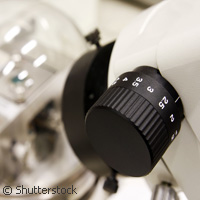An EU research programme that is made to measure
Metrology refers to the science and application of measurement, and it impacts on our lives in countless ways. Today, Europe's metrologists are working together in the European Metrology Research Programme (EMRP), which receives 50% of its funding through the EU's Seventh Framework Programme (FP7). Through the EMRP, they are helping to address the grand challenges facing the world today in diverse fields such as the environment, energy and health. According to EMRP chair Dr Jörn Stenger of the Physikalisch-Technische Bundesanstalt (PTB) in Germany, metrology is all about 'good, reliable and correct measurements'. Furthermore, measurements must be comparable all over the world and at different periods in time. 'Metrology affects all areas of our lives,' Dr Stenger insists. For example, if we go to hospital for a CT (computer tomography) scan, it is thanks to metrology that we can rest assured that the dose of radiation we receive will be enough to generate the scan while remaining within safe limits. Similarly, if different parts of a car are built in different companies and countries, metrology ensures that the parts fit together in the assembly plant. National metrology institutes exist throughout Europe, and they have a long history of international cooperation, as the mutual acceptance of standards and measures across borders is essential. For many years, this cooperation was fairly informal. However, that all changed when the institutes recognised what Dr Stenger calls a 'metrological dilemma'. In short, advances in technology meant research was becoming increasingly expensive, yet national metrology institutes' budgets were at best stable and at worst declining. Since primary measurement standards must be at the forefront of technology to be able to serve all stakeholder needs, metrology is very research intensive. 'We agreed that only a joint approach in metrology research could help us out of this dilemma,' Dr Stenger tells CORDIS News. The seeds of the EMRP had been sown. The group obtained funding from the EU for a project called IMERA ('Implementing metrology in the European research area'). This project, financed under the 'ERA-NET' scheme, allowed Europe's metrology community to formulate a joint, coordinated research programme and determine the procedures and structures needed to implement it. When the first IMERA project ended, the metrologists carried on working through the EU's ERA-NET Plus scheme. During this period, the group issued calls for proposals in four key areas: health, the international system of units (SI units), electromagnetism and dimensional industrial applications. Projects funded in the SI units field address the challenges of measuring constants of nature to redefine SI units such as the kilogram and the Kelvin. The medical projects focus on, among other things, ensuring that diagnostic tests are precise and reliable enough for a doctor to decide confidently whether treatment is needed or not. The topic of dimensional matters covers everything from what constitutes a nanoparticle to measuring the larger distances involved e.g. in manufacturing an aeroplane, where all components must be precisely fabricated. Finally, the electricity projects address various issues including the safe dose for electromagnetic radiation. In 2009, the EMRP obtained Article 169/185 status, securing the future of the joint research programme between the participating Member States and the European Union for a further seven years. Article 185 initiatives (which were formerly known as Article 169 initiatives) intend that countries integrate their national research programmes more deeply into a single European programme. Meanwhile the EMRP is already having a huge impact on the European Research Area (ERA), as roughly 50% of metrology research and development carried out in the countries that have signed up to it is carried out through the EMRP. 'The EMRP is not some nice-to-have, add-on programme, but is really impacting our core mission we have in our institutions,' emphasises Dr Stenger. The EMRP is also generating interest beyond Europe's borders; countries that are particularly interested in the EMRP's work include Australia, Japan, Russia, South Korea, Taiwan and the US. In addition, a number of researchers from outside Europe are involved in EMRP-funded projects. Looking to the future, the EMRP is keen to address the 'grand challenges' facing the world today; to this end, it is asking stakeholders in a number of sectors, including energy, the environment and health, for feedback on the metrology problems that are specific to their sector. 'Our community is convinced that it is a very successful research programme that we have launched - everything is running smoothly and IMERA+ is already producing papers and outputs,' he adds. According to Dr Stenger, the keys to the EMRP's success are the fact that the national institutes already knew and trusted each other and that they share a common mission, which is fundamental to European society. 'This is the basis of everything,' he underlines.
Countries
Germany

